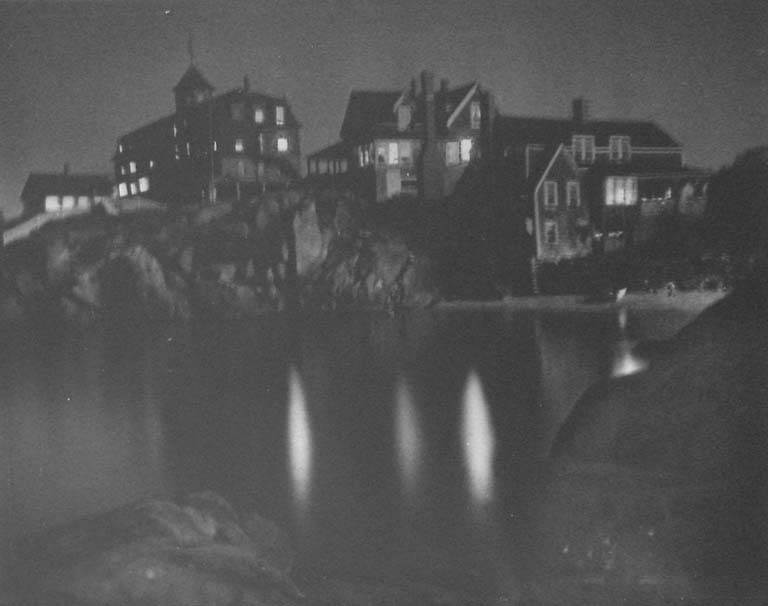Civil Defense: Blackouts & Air Raid Warden
Taylor, Warner. Moonlight.
This image created in the late 1930s shows how the lights of the island were visible on the water.
Winter, Andrew. Self Portrait
Immediately after the start of war seacoast lighthouses were dimmed because their light created visible dark shadows of passing ships which allowed them to be clearly seen even when the ships carried no lights. There was evidence that German submarines took advantage of this silhouetting. Radio beacons such as the one at the fog station on Manana operated with diminished power or not at all.
John Gummere shared his memories of island blackouts in this interview from 7 Aug, 2020
Clara Burton recalled- “Then came the strictly enforced blackouts. The beacon was reduced to a faint, sickly glow until July 1946. How I detested the closed-in feeling each night when the black oilcloth shades were pulled down to prevent any light escaping into the darkness. One night, for no particular reason, I neglected to follow the rules. What I hadn’t figured on was Andy Winter, the air-raid warden, coming up Lighthouse Hill on his nightly patrol. He appeared in my doorway. “Clara, your shades aren’t down” he said sternly. “If you think your lights can’t be seen by a sub or a plane, come outside with me and see you yourself” Meekly I followed him out into the darkness. “See” he said pointing to my windows, “your lights can be seen farther than you think.” He delivered a good-natured lecture to me on law enforcement and the need for blackouts before he left. I ran into the house and pulled down the detestable shades, smarting because I had been caught, and hating everything this horrible war was doing to inconvenience me and everybody else.” Burton, Clara. Monhegan Memories. ‘World War II’, pg. 79. Impatiens Press. 1998.




